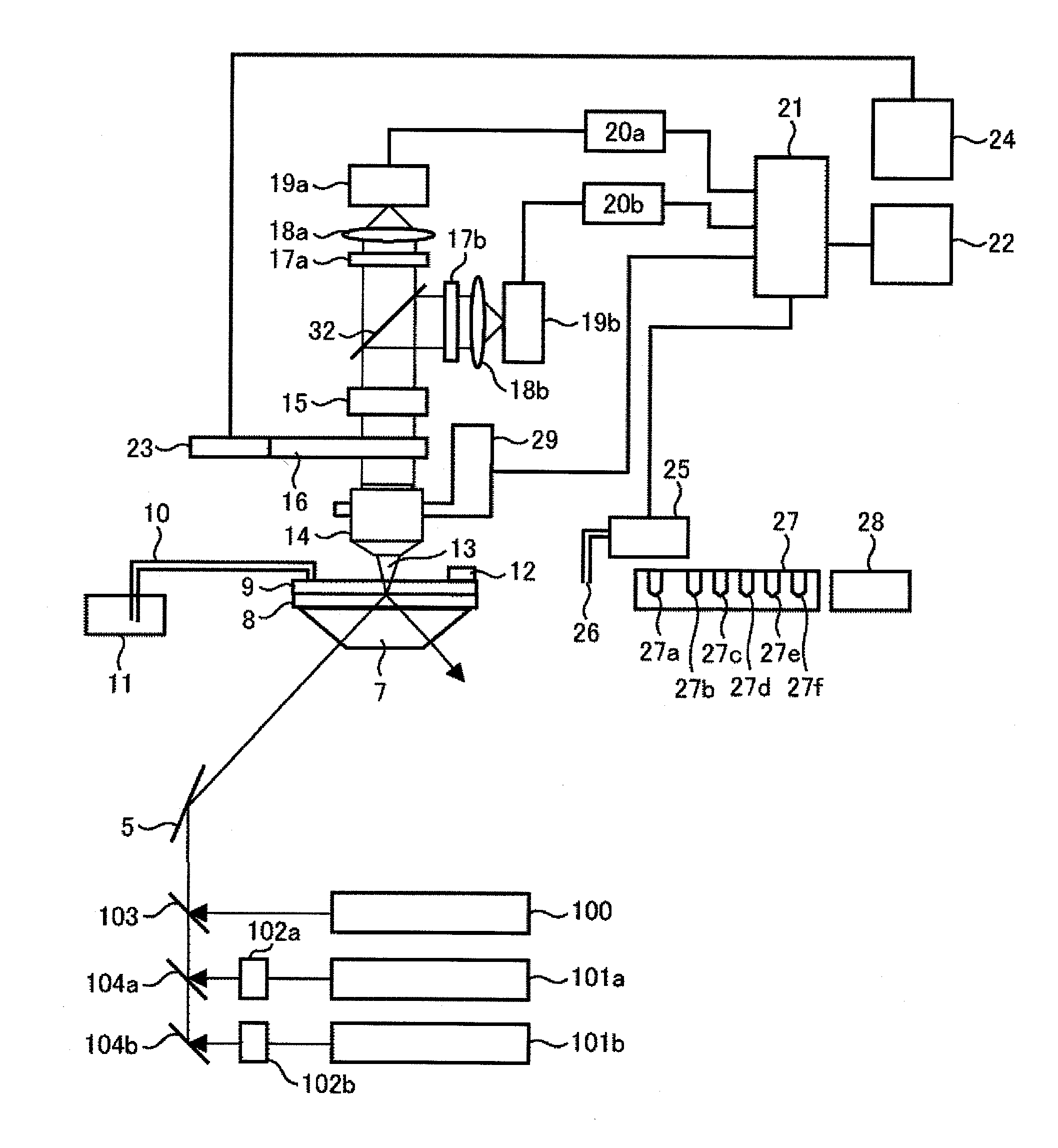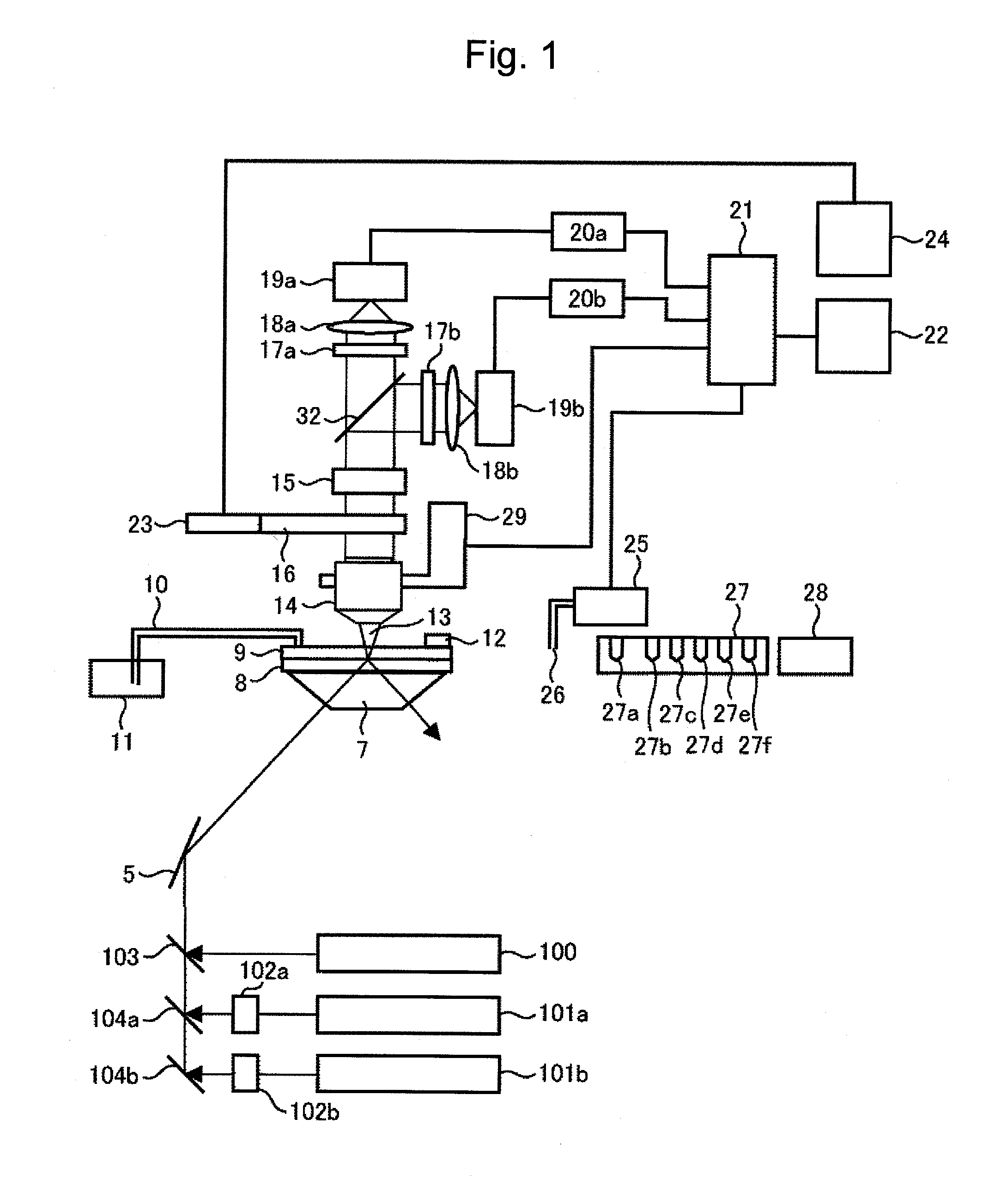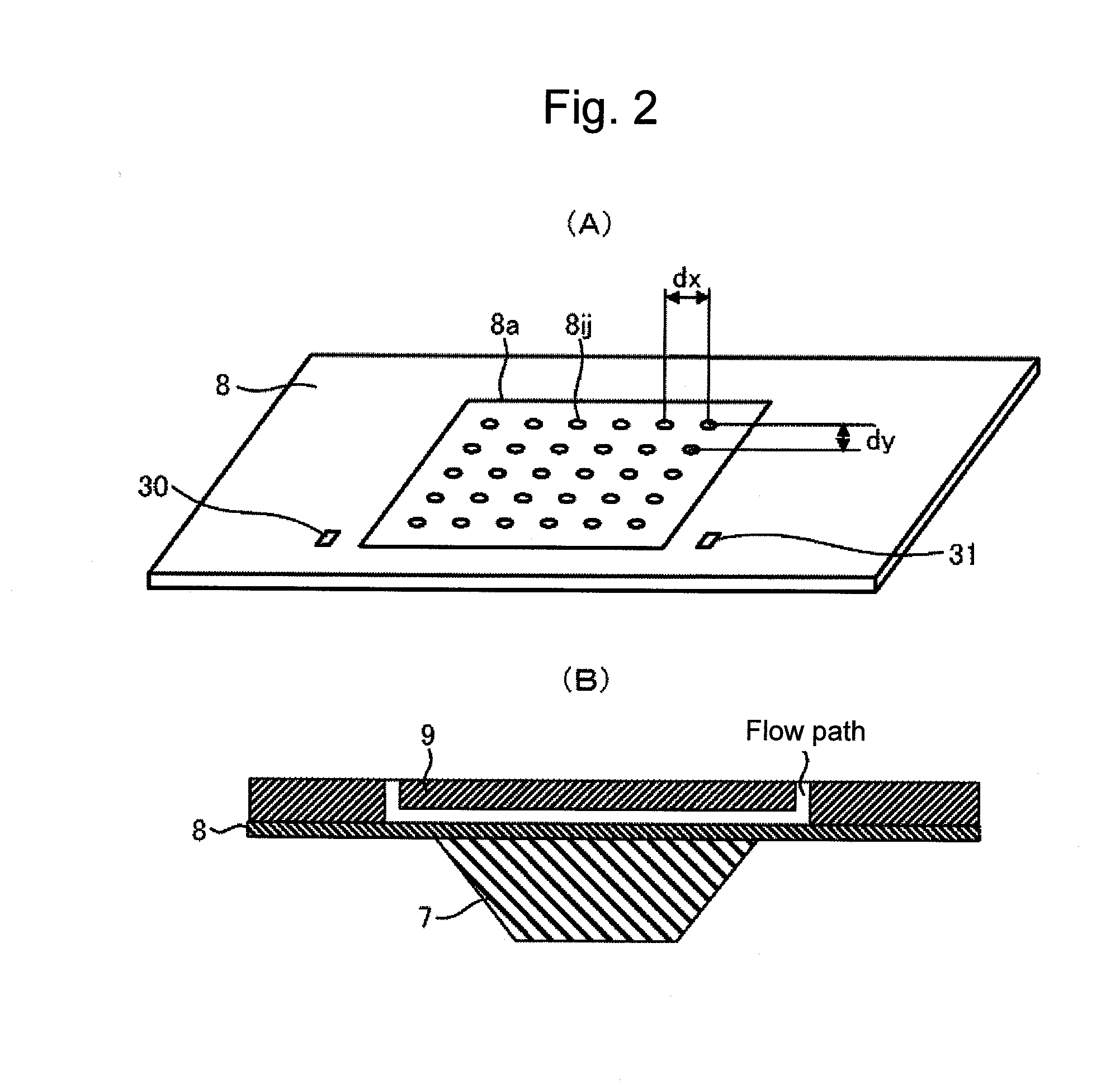Fluorescence analyzing apparatus and fluorescence detecting apparatus
a fluorescence detecting and fluorescent image technology, applied in the field of light analyzing apparatus, can solve the problems of expensive camera having a pixel count of several hundred times the number of captured dna fragment molecules, and achieve the effects of low cost, efficient detection, and preventing one fluorescent image from overlapping
- Summary
- Abstract
- Description
- Claims
- Application Information
AI Technical Summary
Benefits of technology
Problems solved by technology
Method used
Image
Examples
embodiment 1
[0054]Description is given of an apparatus and a method for capturing sample DNA fragments to be analyzed molecule by molecule at equal intervals on a substrate surface, elongating the captured fragments substantially for each base, detecting taken-in fluorescent labels molecule by molecule, and thus determining a nucleotide sequence thereof. Specifically, in one cycle, performed are: a step of causing a DNA polymerase reaction using four types of dNTP derivatives which can be each taken into a template DNA as a substrate of a DNA polymerase to stop a DNA chain elongation reaction by the presence of a protecting group, the dNTP derivatives each having a detectable label; then, a step of detecting the taken-in dNTP derivatives by fluorescence detection or the like; and a step of bringing the dNTP derivatives back into an elongatable state. Such a cycle of the steps is repeated to determine the nucleotide sequence of the sample DNA. Note that single-molecule fluorescence detection is ...
embodiment 2
[0092]FIG. 7 shows a configuration according to Embodiment 2 of the present invention. In the present embodiment, DNA sequencing is performed through a gradual elongation reaction using four types of fluorescent materials. An overall configuration and the like are the same as those of FIG. 1.
[0093]Alexa Fluor 488, Cy3, Cy5, and Cy5.5 are used for the fluorescent labels of dNTPs. Various fluorescent materials other than these can also be used therefor. In addition, four types of dNTPs labeled with one fluorescent material can also be used therefor. A laser beam from a laser apparatus 101c for fluorescence excitation (solid-state laser, 505 nm: for excitation of Alexa Fluor 488 and Cy3) is circularly polarized through a λ / 4 wave plate 102c. A laser beam from a laser apparatus 101d for fluorescence excitation (semiconductor laser, 635 nm: for excitation of Cy5 and Cy5.5) is circularly polarized through a λ / 4 wave plate 102d. The two laser beams are superimposed on each other by a mirro...
embodiment 3
[0099]Another example combination of fluorescent materials is described.
[0100]A similar operation to that of Embodiment 1 can be easily performed using, as the fluorescent materials, five types of Alexa Fluor 488, Alexa Fluor 532, Alexa Fluor 568, Alexa Fluor 594, and Alexa Fluor 647, and these five types of fluorescent materials can be easily identified on the basis of the fluorescence intensity ratios, using the same dichroic mirror as that of FIG. 3(C).
PUM
| Property | Measurement | Unit |
|---|---|---|
| transmittance | aaaaa | aaaaa |
| transmittance | aaaaa | aaaaa |
| thickness | aaaaa | aaaaa |
Abstract
Description
Claims
Application Information
 Login to View More
Login to View More - R&D
- Intellectual Property
- Life Sciences
- Materials
- Tech Scout
- Unparalleled Data Quality
- Higher Quality Content
- 60% Fewer Hallucinations
Browse by: Latest US Patents, China's latest patents, Technical Efficacy Thesaurus, Application Domain, Technology Topic, Popular Technical Reports.
© 2025 PatSnap. All rights reserved.Legal|Privacy policy|Modern Slavery Act Transparency Statement|Sitemap|About US| Contact US: help@patsnap.com



